



 In 2023, the Village was awarded an urban forestry grant that allowed us to inventory all of the trees in parks, parkways and Village land. We have learned a lot from the study, such as, there are 112 species of trees within the 7,412 trees on public property. The Village Green Team wanted to further educate the community on the trees in our parks and is launching on Arbor Day and continuing through October, the Glendale Heights Hug A Tree campaign. We invite you to learn about some of trees and their benefits by finding the Huggable Trees throughout our parks.
There is a scavenger hunt, so be sure to fill out the form online and be entered to win prizes each month! Everyone that turns in the online form will receive a coupon to the GH2O Aquatic Center.
In 2023, the Village was awarded an urban forestry grant that allowed us to inventory all of the trees in parks, parkways and Village land. We have learned a lot from the study, such as, there are 112 species of trees within the 7,412 trees on public property. The Village Green Team wanted to further educate the community on the trees in our parks and is launching on Arbor Day and continuing through October, the Glendale Heights Hug A Tree campaign. We invite you to learn about some of trees and their benefits by finding the Huggable Trees throughout our parks.
There is a scavenger hunt, so be sure to fill out the form online and be entered to win prizes each month! Everyone that turns in the online form will receive a coupon to the GH2O Aquatic Center.
Find the Huggable Trees throughout the Village to scan the QR code to access the scavenger hunt. Don't forget to give our trees a hug and use the hashtag #HugATreeGH to post on your social media.
There are ten trees throughout the Village of Glendale Heights that are looking for hugs. They are located in the following parks:
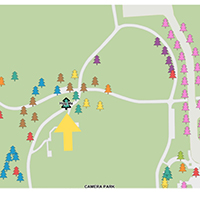 Red Maple in Camera Park:
Red Maple in Camera Park:
101 E Fullerton Avenue
Glendale Heights, IL 60139
You will find the Red Maple in Camera Park where the walking paths cross.
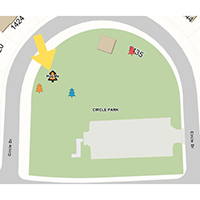 Silver Maple in Circle Park:
Silver Maple in Circle Park:
1435 Circle Drive
Glendale Heights, IL 60139
Make your way a round the bend and find the Silver Maple on the Northwest corner of Circle Park.
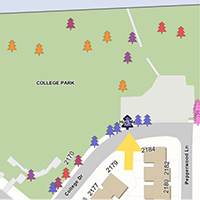 Austrian Pine in College Park:
Austrian Pine in College Park:
2170 College Drive
Glendale Heights, IL 60139
You'll find the Austrian Pine in the middle of his friends. Bring a friend to hug this tree as it splits in the middle and offers two huggable spots!
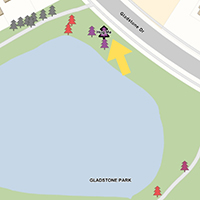 Hackberry in Gladstone Park:
Hackberry in Gladstone Park:
145 Gladstone Drive
Glendale Heights, IL 60139
Our buddy Hack, the Hackberry tree in Gladstone Park lives near the water just off the walking path near Gladstone Drive.
 Callery Pear in Greenbriar Park:
Callery Pear in Greenbriar Park:
430 Second Place
Glendale Heights, IL 60139
Walk the path towards the pavilion and you will find our friend, the Callery Pear, in Greenbriar Park.
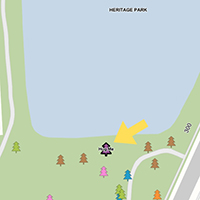 Weeping Willow in Heritage Park:
Weeping Willow in Heritage Park:
1736 Paul Avenue
Glendale Heights, IL 60139
On the south end of Lake Bacerra you will find Weeping Willow. Lean in for a big hug and enjoy the scenery!
 Littleleaf Linden in Nazos Park:
Littleleaf Linden in Nazos Park:
1350 Joyce Avenue
Glendale Heights, IL 60139
The Littleleaf loves to watch all the children smiling and playing at the playground at Nazos Park!
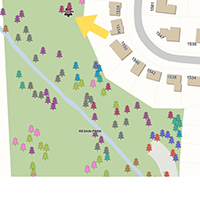 Bur Oak in Reskin Park:
Bur Oak in Reskin Park:
495 E. Fullerton Avenue
Glendale Heights, IL 60139
Follow the acorns to find the Bur Oak in Reskin Park.
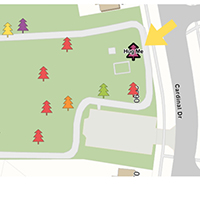 Cottonwood in Siems Park:
Cottonwood in Siems Park:
2090 Cardinal Drive
Glendale Heights, IL 60139
You will find the Cottonwood tree along the north end of the walking path near Cardinal Drive.
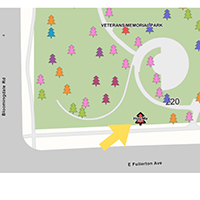 Sunburst Honey Locust in Veterans Park:
Sunburst Honey Locust in Veterans Park:
220 E. Fullerton Avenue
Glendale Heights, IL 60139
This Sunburst Honey Locust has a name, meet Sunny. Sunny lives in Veterans Park and has a history special to Glendale Heights. Look for the special plaque on this tree.
A healthy and well maintained tree population holds many benefits for the residents of Glendale Heights.